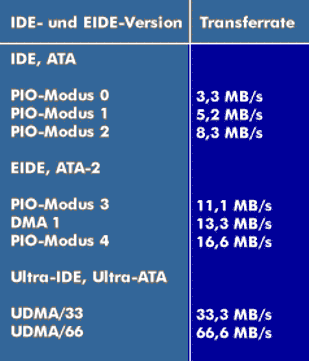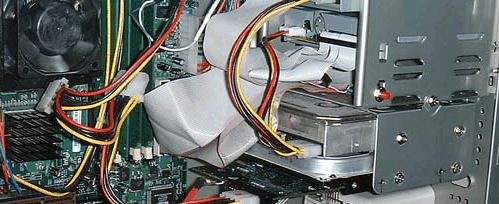integrated drive electronics (IDE)
Integrated Drive Electronics (IDE) or Integrated Device Electronics (IDE) is a parallel hard disk interface for connecting hard disk drives, CD drives, tape drives and floppy disk drives. In more modern IDE drives, the IDE controller is located in the hard disk enclosure.
Integrated Drive Electronics originally limited itself as a file service drive technology to two drives per IDE controller: a dominant master drive and a slave drive controlled by the hard disk controller. By default, it is limited to 63 sectors, 16 read/write heads and 1,024. This results in a storage capacity of 528 MB with 512 data bytes per sector.
The drives are connected to the IDE connectors on the motherboard with an 80- pin ribbon cable. The cable has a length of 40 cm. In the Enhanced version( EIDE) up to four drives can be controlled.
There are various transfer protocols for IDE interfaces, PIO mode and Direct Memory Access( DMA) should be mentioned. Ultra-DMA achieves data transfer rates of 33 MB/s( UDMA/33) and 66 MB/s (UDMA/66). For IDE electronics, there are CD drives and DVD drives in addition to hard disks.


